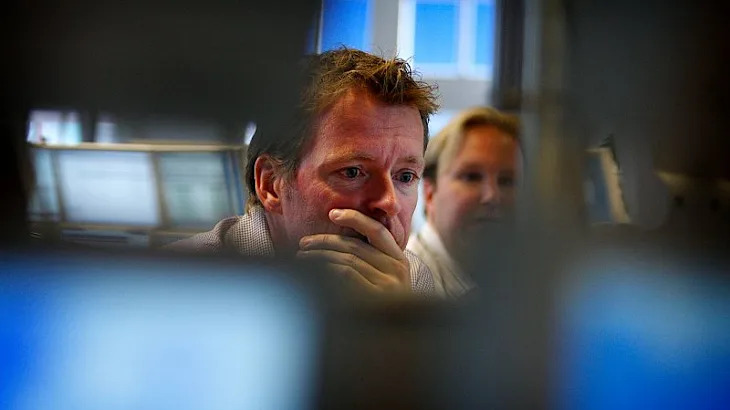How a Dutch trading company started the World’s First Stock Exchange
'Fast' is an understatement for the stock market today.
Real-time price updates on a screen and stocks changing hands at the click of a button—this is the face of modern trading, be it in Tokyo, London, or New York. But, how did it all get started?
It turns out that modern stock trading traces its roots back to a Dutch trading company over four centuries ago.
On 20 March 1602, the Dutch East India Company (‘Vereenigde Oostindische Compagnie’ in Dutch) or the VOC announced the first initial public offering (IPO), laying a foundation for modern financial markets. Article 10 of its charter said: “All the residents of these lands may buy shares in this Company”.
The idea of investments predates the launch of the VOC's IPO. Dutch historian Marteen Prak told Euronews that before the VOC, companies followed a traditional model where merchants pooled money into single trade voyages within Europe or overseas.
“After the trip, the accounts would be settled and people would, well, in case of a profit or at least a sort of positive result, get their investment back. And then of course, they could reinvest in the next trip and so on,” he added.
However, the VOC was a pioneer in two particular aspects. Firstly, the stock ownership was open to all without any set minimum investment amount, and secondly, shares were tradable.
Dutch historian and economist Lodewijk Petram noted in his book, The World’s First Stock Exchange, that a provision had been added to the first page of the charter after its initial granting. It said, “Conveyance or transfer [of shares] may be done through the bookkeeper of this chamber”.
This paved the way for a secondary market. Investors had the option to trade the shares with someone else instead of keeping their money locked up for years.
Trading took place at three key locations: the New Bridge, where merchants conducted the world’s first share transactions in the open air; the Hendrick de Keyser Exchange, a purpose-built marketplace for commodities and shares; and Dam Square, where after-hours trading continued based on the latest news and rumours.
The IPO registration was open throughout the month of August. A sum of 3,674,945 guilders was raised from the 1,143 initial investors. One of them was Neeltgen Cornelis, who worked as a maid for one of the owners of the VOC. She invested 100 guilders, a hard-earned sum when her wage amounted to 50 cents a day.
Related
“This was very usual and not exceptional at all,” Dutch economic historian Jan Luiten van Zanden told Euronews. While the move made by Cornelis might surprise people in today's context, it was fairly standard for the time.
“There were a lot of shares being traded and invested by, well, normal households, a carpenter or a farmer,” van Zanden said.
He also explained that letting ordinary people invest was a condition set by Johan van Oldenbarnevelt, then Grand Pensionary of the Dutch Republic. This was before the pre-companies that merged into the VOC joined together as one large corporation.
“The idea was, let’s put them all together and create a more powerful company—not only commercially but also militarily,” Marteen Prak told Euronews, describing the VOC’s formation as a deliberate power move.
“The Netherlands was attempting to gain its independence from the King of Spain, because they were all ruled by the same crown- Portugal, Spain and the Netherlands. So it was also seen as a form of warfare against the Spanish Empire in Asia,” he said.
This long-term vision had its drawbacks — notably a lack of cash in hand for investors. For almost a decade since the launch of their IPO, the VOC did not pay any dividends, leading to rising discontent among its shareholders.
On top of this, another development was creating pressure on the company — the world's first short seller.
In 1608, Isaac Le Maire, a disgruntled former director of the VOC, led what is now considered the world’s first bear raid. Le Maire and his syndicate used forward contracts to bet against the VOC share prices.
These contracts, similar to modern-day futures, allowed investors to agree on a sale price in advance, expecting to profit when the actual price dropped. Unlike today, no collateral was required—just a written agreement was enough to strike a deal.
This organised attack exacerbated the frustration among investors waiting years for returns, putting pressure on the VOC. Finally, in August 1609, the company announced its first dividend. It was not cash money.
“They used the surplus of mace, which was difficult to sell at the market at the time,” Professor van Zanden explained, noting how the VOC distributed a spice from the nutmeg tree cultivated in the East Indies .
“It was a kind of compromise solution,” he added.
Starting in 1623, the VOC paid dividends every two years, then more regularly from 1635—often annually or semi-annually. In the 1630s and 1640s, dividends were mostly cloves, which shareholders accepted gladly. From 1646, dividends were mostly in cash, with occasional bond distributions. This maintained shareholder confidence and allowed prices to steadily rise.
Professor Prak also described the decline of the VOC in the late 18th century, attributing it to the rise of French and British colonial powers.
“It became increasingly expensive for the Dutch Republic and also for the VOC to hold off their rivals,” the historian said. “When it became clear that it would go bankrupt, the Dutch government bought all the shares.”
Pioneering key financial innovations since its inception, the VOC laid the cornerstone for today’s capital markets. For the following two centuries, it remained a key player in global trade, until its gradual decline.
“This [the VOC’s tenure] is a long time of good success,” said Professor van Zanden.
“And the failure at the end of the 18th century is related to the general weakening of dominance with the rise of competitors,” he added.
